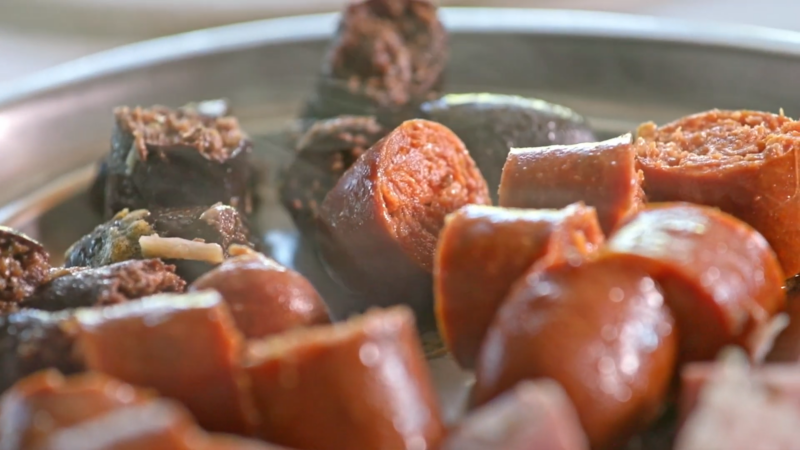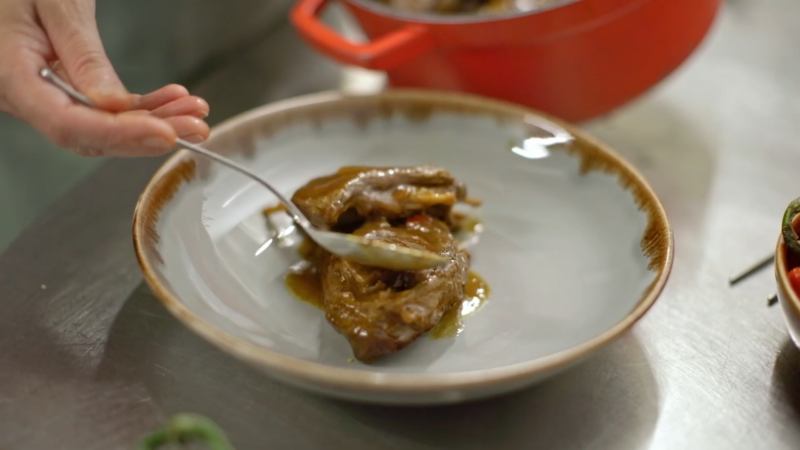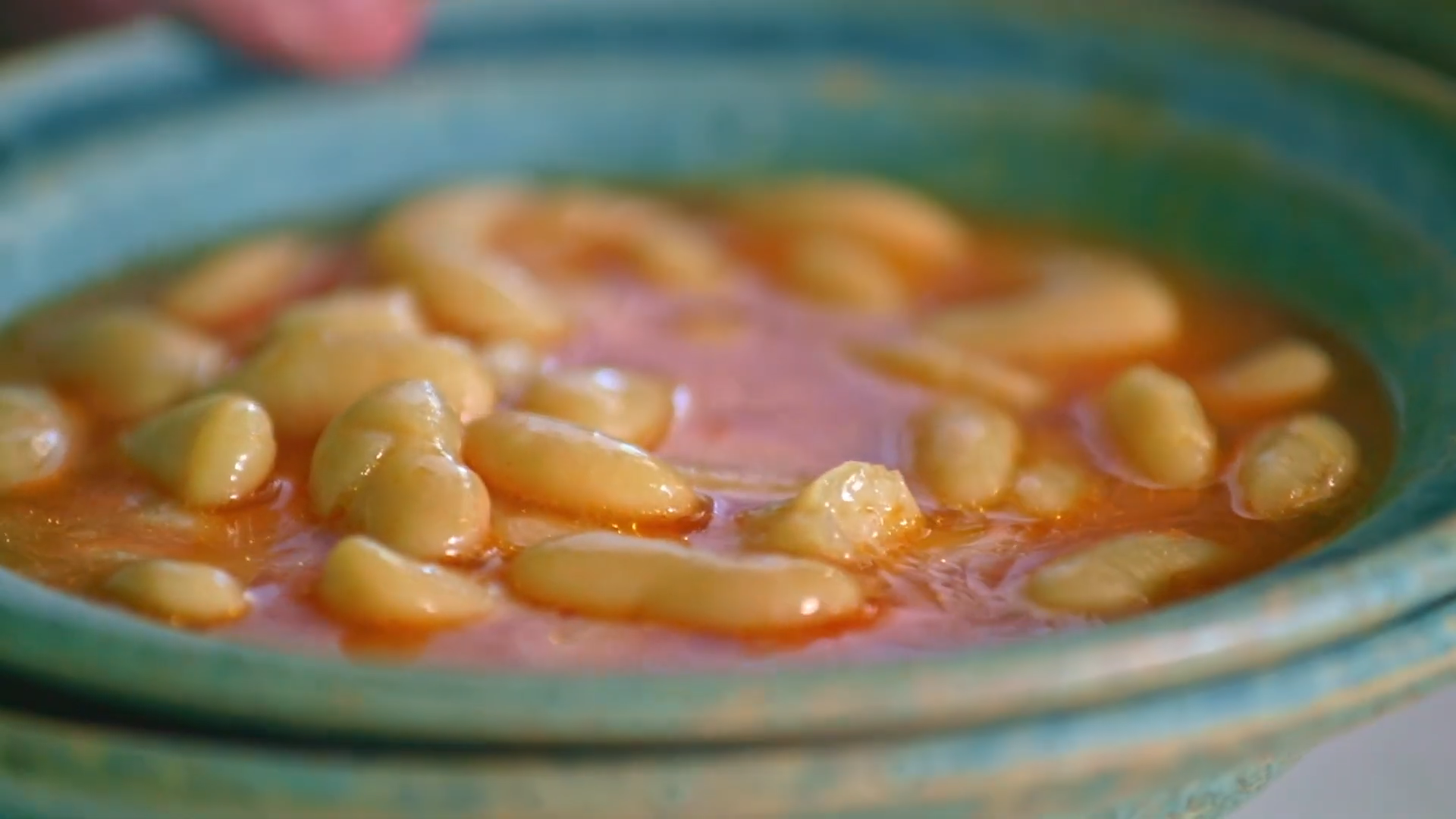Asturian cuisine has always been something special. It’s rich, hearty, and deeply tied to the land.
Growing up with plates full of fabada, cachopo, and freshly made cabrales cheese, I never imagined those flavors could evolve into something different. Yet, here we are.
The food scene in Asturias is changing, and it’s impossible to ignore.
Some purists hold tight to tradition, insisting that old recipes should never be altered.
Others see change as a good thing—proof that Asturian cuisine isn’t just surviving but thriving. Both perspectives have their place, and honestly, I get both sides.
The Soul of Asturian Cooking: Time-Honored Traditions

At its core, Asturian food is about comfort and quality ingredients. The region’s climate and geography have shaped a cuisine that’s simple but incredibly satisfying.
Staples That Never Go Out of Style
Some dishes are so deeply ingrained in daily life that they aren’t going anywhere:
- Fabada Asturiana – A slow-cooked bean stew loaded with chorizo, morcilla, and pork. A dish that defines Asturian kitchens.
- Cachopo – Two massive veal fillets stuffed with ham and cheese, breaded, and fried. The ultimate indulgence.
- Sidra (Cider) – Poured from above the head to aerate, then down in one sip. More than just a drink—it’s a tradition.
- Queso Cabrales – A blue cheese aged in caves, packing a punch of intense flavor.
These foods tell a story. They’ve been passed down for generations, and the techniques used to make them haven’t changed much. Ask any older Asturian, and they’ll likely tell you, “If it ain’t broke, don’t fix it.”
Modern Twists: A New Era of Asturian Cuisine
But food doesn’t stay frozen in time. New generations of chefs are experimenting, blending old traditions with fresh ideas. And honestly? Some of the results are incredible.
Lighter, Healthier, but Still Delicious
Asturian food has a reputation for being hearty—which is a polite way of saying it can be heavy. Modern chefs are finding ways to make traditional dishes a little lighter without losing their soul.
- Fabada with a Twist – Some chefs swap pork for seafood or add vegetables to make it less rich. Still warming, just not quite as heavy.
- Cachopo Variations – Veal is classic, but now you’ll find versions made with fish, chicken, or even vegetarian fillings.
- Plant-Based Sidra Pairings – Instead of chorizo and cheese, cider bars now offer lighter, plant-based tapas that still complement the drink.
Plating and Presentation: No More Rustic Piles of Food
Traditional Asturian food is all about big portions and generous servings. In newer restaurants, plating has become an art. Instead of a heaping plate of fabada, you might see a carefully arranged bowl with precisely placed chorizo slices. Same flavors, different approach.
Some love the refinement, others miss the rustic charm. But there’s no denying that visually appealing dishes are drawing in younger diners and food tourists.
The Role of Michelin-Starred Restaurants
@cenandoconpablo Uno de mis Restaurantes Favoritos en España: Casa Marcial de Nacho Manzano en La Salgar (Arriondas, Asturias). Ya he venido 5 veces y las que quedan 🤣 #asturias #michelin #estrellasmichelin #restaurantesespaña ♬ sonido original – CENANDO CON PABLO
If anyone is pushing the boundaries of Asturian cuisine, it’s the chefs behind the region’s Michelin-starred restaurants. They’re reimagining classic flavors, using modern techniques, and creating dining experiences that are worlds apart from a countryside sidrería.
A Taste of Innovation
- Nacho Manzano (Casa Marcial) – Raised in a traditional Asturian household, he takes those same flavors and refines them into elegant, Michelin-starred masterpieces.
- Jaime Uz (Arbidel) – Balances tradition and creativity, using local ingredients in ways that surprise even lifelong Asturian food lovers.
- Isaac Loya (Real Balneario) – Focuses on seafood, bringing modern techniques to traditional Asturian fish dishes.
These chefs aren’t replacing classic food. Instead, they’re proving that Asturian flavors can be just as exciting on a fine dining plate as they are in a home kitchen.
Sidra Culture: Old-School Rituals vs. Modern Trends
View this post on Instagram
Cider is more than a drink in Asturias—it’s a way of life. The classic method of drinking it, with that dramatic high pour and quick sip, remains unchanged. However, cider houses are evolving, bringing new twists to a deeply rooted tradition.
While traditional natural cider still reigns supreme, some producers are stepping outside the norm, experimenting with sparkling versions and barrel-aged varieties. These modern takes introduce subtle complexities in flavor and texture, appealing to both purists and adventurous drinkers alike.
Beyond the drink itself, the experience of enjoying sidra is also changing. Some bars now offer full cider-pairing menus, treating it much like wine. Instead of simply serving it alongside a plate of cheese or cured meats, restaurants and cider houses are crafting curated experiences that highlight how different styles of cider complement various dishes.
Another shift is happening in tourism. More visitors are traveling to Asturias specifically for the cider experience. To meet growing demand, cider makers are adapting, offering tours and tastings designed to introduce newcomers to the culture while giving longtime enthusiasts a fresh perspective.
Traditional sidrerías still thrive, but there’s now a broader range of options for those looking to explore Asturias’ most iconic drink in new and exciting ways.
Home Cooking: What’s Changing in Asturian Kitchens?

Restaurants aren’t the only ones making changes. Home cooks are also adapting, and it’s interesting to see how traditional recipes shift over time.
Lighter Cooking Methods
Convenience Without Sacrificing Flavor
Life moves faster now. While traditional cooking takes time, modern kitchens lean toward efficiency. Some families use pressure cookers for fabada instead of slow simmering for hours.
Others buy high-quality pre-made ingredients to speed things up. The goal? Keep the flavors, and cut the effort.
What’s Staying the Same?
Today we’re celebrating #FabadaDay, one of the most iconic dishes from Asturias. 🥣
Who’s craving a taste?#fabada #asturias #spain pic.twitter.com/3d1A5AmJET
— FoodWineSpain (@FoodWineSpain) February 24, 2025
Despite all the changes, certain elements of Asturian cuisine remain untouched. Seasonality continues to be a cornerstone, with ingredients tied to the land and fresh, local produce shaping every dish. No matter how modern techniques evolve, the connection to regional flavors stays strong.
Beyond the food itself, the culture surrounding meals holds just as much importance. Eating isn’t just about nourishment—it’s a social experience. Meals are never rushed, and they’re meant to be enjoyed in good company, whether at home with family or in a bustling sidrería with friends.
Final Thoughts
Some fear that the modern take on Asturian food will erase tradition. But honestly? The heart of the cuisine is still intact. Change doesn’t mean forgetting the past—it means adapting it to fit new lifestyles, new palates, and new ways of enjoying food.
Traditionalists will always have their beloved fabada and sidra poured the old-fashioned way. Adventurous diners will find new interpretations that excite their taste buds. There’s room for both, and that balance is what keeps a food culture alive.
So, whether you’re a cachopo purist or someone eager to try a modern twist, one thing is certain: Asturian cuisine isn’t going anywhere. It’s just finding new ways to shine.
